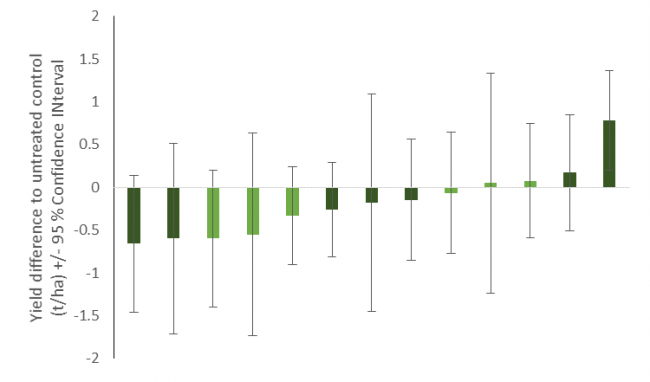Spring potash applications caused yield increases at two out of seven sites with potash-releasing clays.
Potassium (K) is an important nutrient for crops, being involved in water regulation and the transport and uptake of nitrogen (N). UK guidance at the time of these trials (in RB209) suggested that K available from potash releasing clay soils might not be sufficient to support crops with high yield potentials. This FIG therefore decided to test potash applications in spring, near the time of the main N application by investigating potential benefits of applying Muriate Of Potash (MOP; 60 % K) to winter wheat. Seven FIG members were involved over two seasons and tested either no MOP or 200 kg/ha MOP applied at sites where soil K Index was 2 or more. A third treatment (100 kg/ha MOP) was included at most sites. Out of 7 trials that were analysed statistically, one trial from 2018 showed significant yield increases (100 MOP: +0.23 t/ha; 200 MOP: + 0.49 t/ha), and one trial from 2019 (200 MOP: +0.79 t/ha). However, analysis across all sites suggested no overall effect of spring K applications. This could be in part due to seasonal factors such as soil moisture content. Also, in 2019, MOP treatments were seen to induce symptoms of chlorosis by three FIG members, and possibly due to higher levels of leaf chloride. This work suggests that spring potash applications may be beneficial on some occasions and that further investigations into appropriate conditions and products could prove worthwhile.

Click here to read full report.
